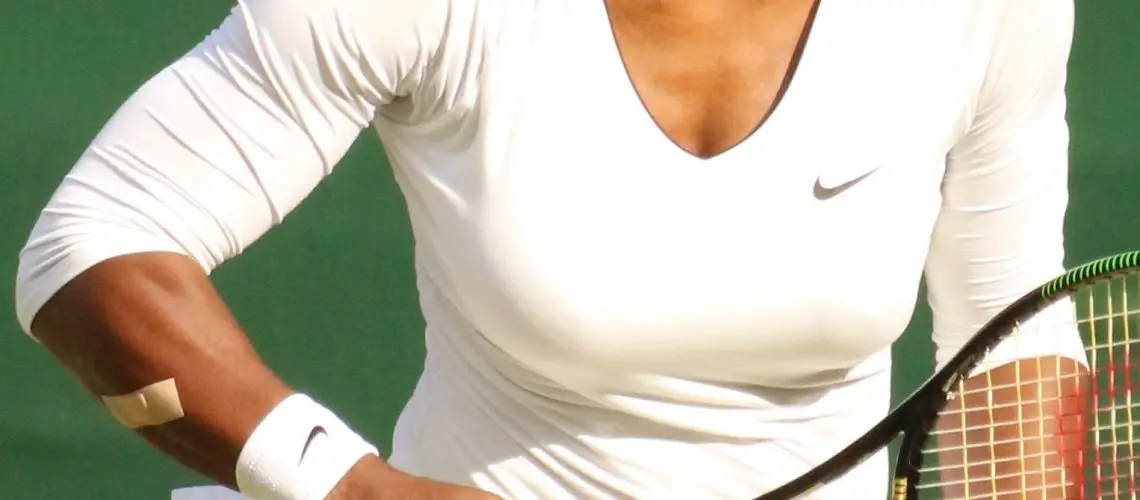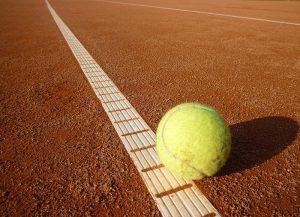We may earn money or products from the companies mentioned in this post.
Introduction to Tennis Balls

Tennis balls have been an integral part of the sport since its inception They play a crucial role in determining the performance and playing characteristics of the game Understanding the composition of tennis balls is essential for players, coaches, and enthusiasts alike In this article, we will delve into the fascinating history of tennis balls, explore their evolution over time, and highlight the importance of comprehending their composition
Brief History of Tennis Balls
1 Early Tennis Ball Materials
In the early days of tennis, various materials were used to construct tennis balls One such material was human hair wrapped tightly around a core made from cork or wood These handmade balls provided limited bounce and were prone to wear and tear during gameplay
2 Evolution of the Modern Tennis Ball
Over time, advancements in technology revolutionized tennis ball production In 1870, Major Walter Clopton Wingfield introduced rubber as a key component for making tennis balls The use of rubber significantly improved their durability and bounce
In 1972, Wilson Sporting Goods introduced pressurized tennis balls that further enhanced performance on different court surfaces Pressurization allowed for more consistent bounce and increased speed off the racket
Importance of Understanding Tennis Ball Composition
1 Performance and Playing Characteristics
The composition of a tennis ball directly influences its performance on the court Factors such as felt covering thickness, internal pressure, and core materials determine how a ball behaves when struck by a racket or hits the ground
For example, high-altitude tennis requires specific types of balls with reduced air pressure inside them to ensure optimal playability at higher elevations where atmospheric pressure is lower
2 Environmental Impact
Understanding tennis ball composition is also crucial from an environmental perspective Tennis balls are typically made with a rubber core, which is non-biodegradable and can contribute to landfill waste
However, sustainable alternatives have emerged in recent years Some companies have started producing eco-friendly tennis balls made from recycled materials or using biodegradable components
By choosing environmentally-friendly tennis ball options, players and organizations can reduce their carbon footprint and contribute to a more sustainable future for the sport
In conclusion, delving into the history of tennis balls allows us to appreciate how far they have come in terms of performance and durability Additionally, understanding the composition of these balls enables players to make informed decisions about their equipment choices while considering the environmental impact So next time you step onto the court, take a moment to ponder the journey that tennis balls have taken – from human hair and cork cores to high-tech rubber creations that enhance our gameplay experience
Materials used in Tennis Ball Construction

Rubber Core Composition
When it comes to the core composition of tennis balls, manufacturers have the choice between natural rubber and synthetic rubber Natural rubber, derived from latex harvested from rubber trees, offers excellent elasticity and durability On the other hand, synthetic rubber provides consistent performance regardless of temperature and humidity conditions The proportions of natural and synthetic rubber used in the mixture can vary depending on desired ball characteristics
Chemical Additives for Performance Enhancement
To enhance the performance of tennis balls, chemical additives are incorporated into the rubber core composition These additives serve different functions such as improving bounce, increasing durability, and enhancing grip Some common types of additives include accelerators to speed up vulcanization, antioxidants to prevent degradation, and plasticizers to enhance flexibility While these additives contribute to better playing properties, there are potential concerns regarding their impact on human health and the environment
Cloth Covering (Felt)
The outer layer of a tennis ball is made up of cloth covering known as felt This felt is typically composed of a combination of wool and nylon materials Different proportions of these materials are used in various types of balls to achieve desired performance characteristics Wool provides softness and increased spin potential while nylon adds durability and resistance to wear
Dyeing Process for Felt
In order to give tennis balls their distinctive color, the felt undergoes a dyeing process Various colors are used including traditional yellow or white for professional play as well as other colors for recreational purposes or visibility on different court surfaces The choice of colors can also have significance in terms of brand recognition or tournament regulations However, it’s important to consider the environmental aspects related to dyes used in this process
Tennis Ball Manufacturing Process

Have you ever wondered how tennis balls are made? It’s a fascinating process that involves precision and careful craftsmanship Let’s take a closer look at the intricate steps involved in creating these iconic sports accessories
Formation of the Rubber Core
The first step in manufacturing tennis balls is the formation of the rubber core, which gives them their distinctive bounce This begins with the preparation of raw materials, including natural or synthetic rubber compounds These compounds are carefully measured and mixed to achieve the desired consistency and durability
Once the rubber compound is ready, it undergoes heating and molding techniques The mixture is heated to a specific temperature and then poured into molds, where it takes shape as a solid core This process ensures that each ball has a consistent weight and size, crucial for fair play on the court
Application of Felt Covering
The next stage involves applying the felt covering to the rubber core This step plays a significant role in enhancing both performance and durability The felt covering not only provides grip but also protects the core from wear and tear during intense gameplay
Gluing Process
A crucial part of attaching the felt covering to the rubber core is through gluing Special adhesives are used to bond these two components together securely Manufacturers carefully choose adhesives that offer excellent bonding strength while ensuring they won’t affect gameplay or pose any health hazards for players
Bonding strength considerations are essential during this stage Tennis balls endure high-speed impacts, so it’s vital for their covers to remain intact throughout matches without peeling off or losing their grip properties
Cutting and Seaming Techniques
To achieve a seamless finish, cutting and seaming techniques are employed The felt material is cut into precise dimensions, ensuring uniformity across all the balls produced Skilled workers then expertly sew or seam the cut pieces together to form a smooth and seamless covering around the rubber core
Quality Control Measures
To ensure that every tennis ball meets high-quality standards, strict quality control measures are implemented throughout the manufacturing process
Inspection Requirements
Inspections are conducted at various stages of production to check for any defects or inconsistencies This includes examining the rubber cores for structural integrity, verifying that the felt covering is securely attached, and conducting thorough visual checks for any imperfections
Performance Tests
In addition to visual inspections, tennis balls undergo performance tests to evaluate their bounce, durability, and consistency These tests involve subjecting a sample of balls to rigorous conditions that simulate real gameplay scenarios By doing so, manufacturers can ensure that their products meet the demanding standards expected by professional players and enthusiasts alike
The tennis ball manufacturing process entails meticulous attention to detail and adherence to stringent quality control measures It’s through these processes that we can enjoy a game of tennis with reliable equipment that delivers consistent performance on the court
Types, Specifications, and Uses for Different Tennis Balls

ITF Approved Categories
When it comes to tennis balls, the International Tennis Federation (ITF) has established specific categories to ensure consistency and fairness in gameplay These approved categories are designed to suit different playing conditions and skill levels
1 Type-1: Slow Pace Balls
Type-1 tennis balls are specifically designed for slow-paced games They have material differences that set them apart from other types of balls, allowing players to control their shots with better precision These balls are most suitable for use on clay or grass courts where slower ball speed is desired
2 Type-2: Medium Pace Balls
Type-2 tennis balls are the standard choice for professional tournaments around the world They offer a balanced level of pace and bounce, making them suitable for various playing situations Whether you’re playing on hard courts or indoor surfaces, type-2 balls provide consistent performance and optimal playability
3 Type-3: Fast Pace Balls
Type-3 tennis balls are designed to deliver fast-paced gameplay with unique material or manufacturing differences compared to other types of balls These balls are ideal for players who prefer an aggressive style of play and enjoy quick exchanges at the net Type-3 balls excel on faster court surfaces like concrete or synthetic grass
Specialty Tennis Balls
1Pressureless Tennis Balls
Unlike pressurized tennis balls that lose their bounce over time, pressureless tennis balls maintain their consistent feel and performance throughout extended use This makes them perfect for practice sessions or training drills where durability is essential Pressureless balls also offer a unique feel and are often preferred by players with specific preferences or playing styles
2High Altitude Tennis Balls
Playing tennis at higher altitudes can pose challenges due to the difference in atmospheric conditions High altitude tennis balls are specifically designed to compensate for the thinner air, ensuring optimal bounce and performance These balls are recommended for use in mountainous regions where standard balls may not provide the desired level of playability
Junior and Training Tennis Balls
1Red, Orange, and Green Dot Progression System
For beginners and junior players, tennis balls with a progression system using red, orange, and green dots are used to facilitate skill development Each dot represents a different level of compression, allowing players to gradually adapt to faster-paced games as they progress This system helps young players enhance their technique while building confidence on the court
2Materials Used in Beginner Level Ball Construction
Tennis balls for beginners are constructed with materials that provide additional control and slower pace These softer balls allow new players to focus on developing their strokes without being overwhelmed by excessive speed The materials used in beginner-level ball construction ensure a gentle impact when hit, making it easier for novices to learn basic techniques
Useful Links

Are Tennis Ball Felt Made Out Of
Tennis ball | sports equipment
Tennis ball
How It’s Made: Tennis Balls
New Balls, Please
What Are Tennis Balls Made of? – Material, Size & Weight
The Evolution of the Tennis Ball
The history of tennis balls
History of the Tennis Ball
What is a Lifetime Supply of Tennis Balls?
How Tennis Balls are Made? [DETAILED EXPLANATION]
History of Tennis Balls: A Journey Through Time
How tennis balls are made: inside Wilson’s tennis-ball factory
What Are Tennis Balls Made Of?
Tennis Balls: Everything You Need to Know about Them
How to Choose a Tennis Ball
11 Smart Uses for Old Tennis Balls | HowStuffWorks






